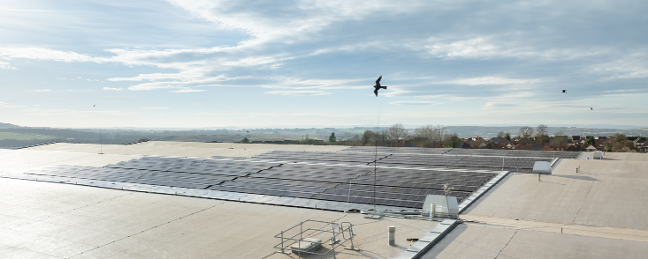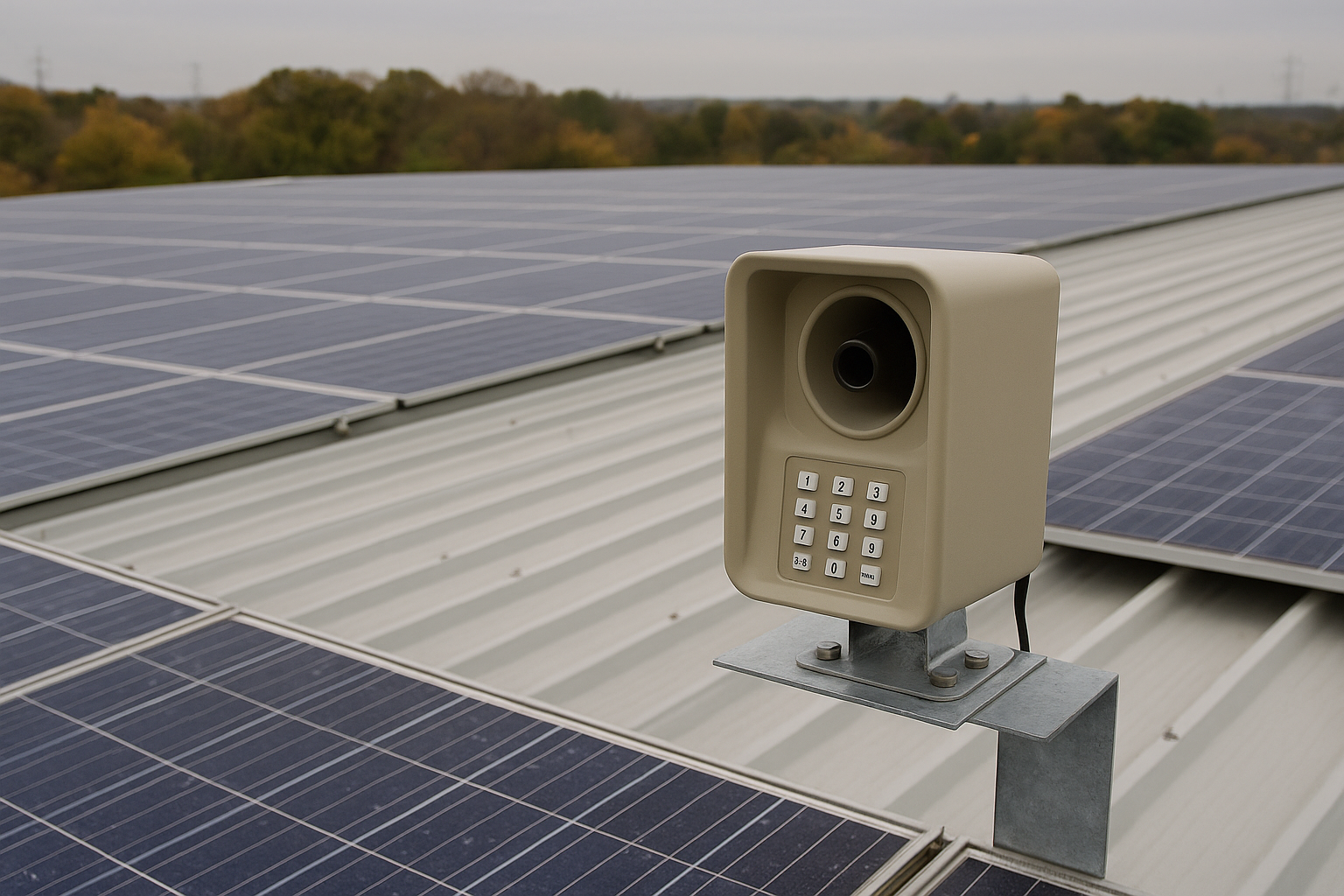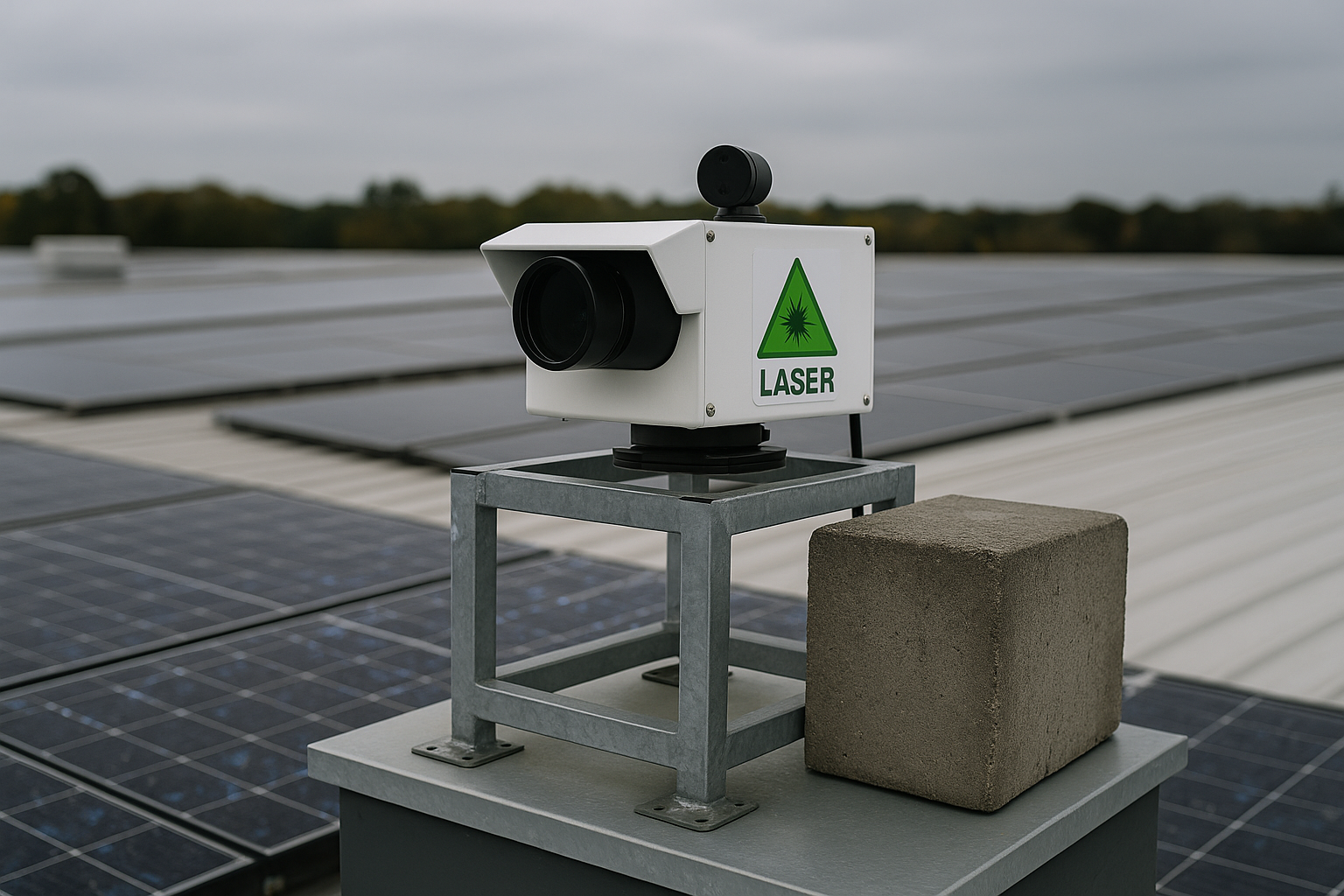Case Study
Next: Bird Deterrent

PROJECT INFORMATION
PROJECT
Next
PROJECT START
March 2025
Protecting Solar PV Performance at Scale for Next
Client Brief
Next, a major UK retailer with multiple large-scale distribution centres and rooftop solar PV installations faced a persistent issue: bird fouling. Across several of their sites, heavy bird activity was reducing solar panel efficiency, blocking rooftop drainage systems, and increasing cleaning and maintenance costs.
Lynx Project Management Solutions was engaged to identify and implement a practical, long-term bird deterrent strategy that would protect system performance, minimise cleaning frequency, and support sustainable operations across the portfolio.
Solution
We conducted a comprehensive assessment of the affected sites and reviewed various deterrent technologies. The goal was to recommend a cost-effective, scalable solution that could be deployed across multiple rooftops.
The team evaluated four primary deterrent approaches:
- Bird kites, mounted on telescopic carbon rods with weighted bases, simulate predatory flight and discourage nesting.
- Hawking flights, using trained birds of prey during nesting season.
- Sounder scarers, fully automatic dispersal units emitting distress calls at random intervals.
- Laser systems are mounted on extended frames to project moving light patterns across the PV array.
Each option was assessed against key criteria: cost, effectiveness, maintenance requirements, and site compatibility.
Following this assessment, Lynx recommended and installed a dual solution comprising hawk kites and sounder scarers. This approach provided consistent visual and audio deterrents, was quick to deploy, and required minimal ongoing input.



Some of the options we explored for the client L-R; hawk flights, sound scarers and laser scarers.
Challenges
The evaluation and implementation process involved several practical considerations:
- Open rooftop environments require durable systems operating reliably in variable wind and weather conditions.
- Some deterrent systems required rooftop power supplies, which had to be factored into feasibility.
- High-cost solutions like hawking and laser deterrents were assessed but ultimately deprioritised due to their limited scalability and return on investment.
- Systems had to be safe for ongoing rooftop maintenance teams, particularly in the case of laser deployment.
While effective in isolation, we excluded hawking flights due to high recurring costs and the need for supplementary year-round deterrents. Similarly, the laser systems — although technically viable — were considered cost-prohibitive as a first-line solution.
Each option was assessed against key criteria: cost, effectiveness, maintenance requirements, and site compatibility.
Following this assessment, Lynx recommended and installed a dual solution comprising hawk kites and sounder scarers. This approach provided consistent visual and audio deterrents, was quick to deploy, and required minimal ongoing input.
Results
With hawk kites and sounder scarers installed and operational, Next has already seen early improvements in rooftop cleanliness and solar PV performance. The new deterrent systems are helping reduce the frequency and cost of cleaning while protecting critical drainage infrastructure.
By taking a measured, data-led approach, Lynx Project Management Solutions delivered a scalable, low-cost solution tailored to the client’s operational needs and provided a replicable model for bird deterrence across other commercial solar PV assets.
Other case studies
EV Charger Installation
Case Study EV Charger Installation PROJECT INFORMATIONPROJECT EV Charger InstallationPROJECT START June 2025PROJECT DURATION 8 WeeksIntegrated EV Charging Solution for Growing WorkforceClient Brief A long-term client approached Lynx Project Management Solutions to...
MHE Charger- Next Electrical Upgrade
Case Study Next: MHE Charger-Electrical UpgradePROJECT INFORMATIONPROJECT NextPROJECT START April 2024PROJECT DURATION 8 WeeksMHE ChargerNext plc has multiple warehouse and distribution facilities across the UK, each is equipped with an MHE fleet appropriate for the...


